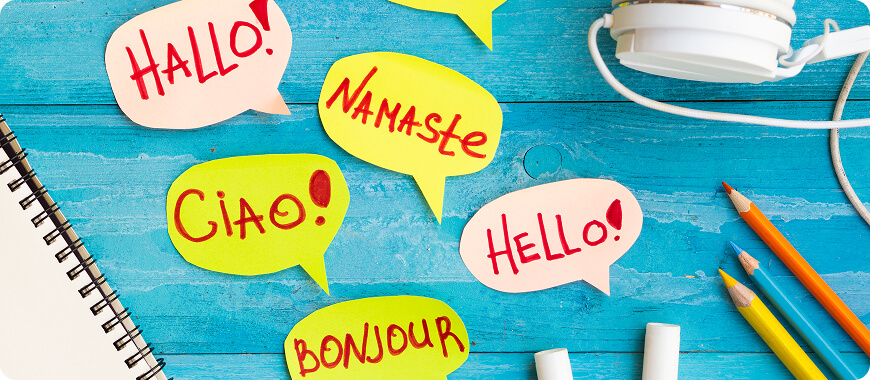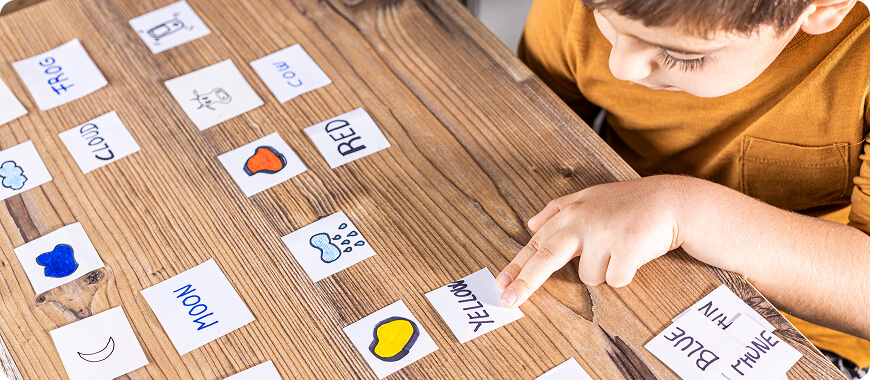If you’ve ever heard your child say, “I want the big red ball!” or “This cake is so yummy!”, congratulations—you’re already hearing adjectives in action! But what exactly are adjectives, and why do they matter so much in your child’s English journey?
At Learnlink, we’ve spent years helping young learners build strong, joyful foundations in English—and adjectives are one of the most powerful tools we teach. They’re not just “describing words.” They’re magic keys that unlock clearer communication, richer storytelling, and more confident expression.
In this guide, you’ll discover everything you need to know about adjectives for kids—from simple definitions and real-life examples to playful activities you can try at home or in the classroom. Plus, we’ll share practical tips to avoid common mistakes and boost your child’s vocabulary naturally.
And if you’re looking for a fun, effective way to take learning further, our online English courses for children are designed by expert teachers who know exactly how kids learn best. More on that soon—but first, let’s dive in!
Why Are Adjectives Important in English?
Adjectives are words that describe people, places, things, or ideas. Think of them as the colourful sprinkles on a plain cupcake—they add detail, emotion, and personality.
Without adjectives, language would be flat:
❌ “I have a dog.”
✅ “I have a fluffy, playful, brown dog!”
For young learners, mastering adjectives helps them:
- Express themselves more clearly (“I’m not just sad—I’m heartbroken!”)
- Understand stories better (What does a “creepy old house” look like vs. a “bright, cheerful cottage”?)
- Build stronger writing and speaking skills
- Expand their vocabulary naturally through everyday conversation
The best part? Kids love using adjectives once they realise how much fun they are. A “monster” isn’t just scary—it can be slimy, enormous, purple, and giggly!
At Learnlink, we’ve seen shy students light up when they describe their dream pet or favourite food using vivid adjectives. It’s not just grammar—it’s self-expression.
Types of Adjectives for Young Learners
Not all adjectives are the same! Here’s a simple breakdown of the main types your child will encounter—explained in a way that’s easy to grasp (no jargon, we promise!).
Descriptive Adjectives: The Words That Paint Pictures
These are the magic words kids use to bring the world to life! They describe what things look like, feel like, or how someone’s feeling.
Think of them as your child’s personal paintbrush for language:
- Colours: red, blue, golden, emerald, sky-blue
- Sizes: tiny, huge, medium, teeny, enormous
- Shapes: round, square, wavy, star-shaped, heart-shaped
- Feelings: happy, nervous, excited, grumpy,
Quantitative Adjectives: How Many? How Much?
These little helpers answer the questions “How many?” or “How much?”—perfect for snack time, toy counts, or sharing sweets!
Demonstrative Adjectives: Pointing with Words
No fingers needed! These adjectives point to things—near or far, one or many—like a friendly verbal nudge
Tip for parents: Play “This or That?” while walking:
“Do you like this ice cream or that one?” — it’s grammar practice disguised as a game!
Possessive Adjectives: Whose Is It?
These sweet little words show who something belongs to—a must for sharing, storytelling, and avoiding toy wars!
Adjective Word Lists by Category
Want a handy reference? Here are 10 common adjectives in each kid-friendly category. Print this list or stick it on the fridge for quick practice!
Examples Of Adjectives In Sentences For Kids
Seeing adjectives in real sentences helps children understand how they work. Here are more examples—simple, relatable, and full of personality:
- My fluffy cat sleeps on the soft sofa.
- We saw a gigantic rainbow after the heavy rain.
- She felt nervous before her first piano recital.
- This juicy apple is so sweet!
- They live in a cozy house with a red door.
- He has a clever robot that tells funny jokes.
- The stormy sky turned dark and scary.
- Look at that huge, grey storm cloud!
- The sunny sky made everyone feel happy.
- The baby looked sleepy and peaceful in her cot.
Notice how adjectives usually come before the noun they describe (“fluffy cat”) or after linking verbs like is, feel, look (“She feels nervous”).
At Learnlink, we use real-life scenarios in every lesson—like describing a pizza, a pet, or a superhero—so kids learn adjectives in a way that sticks.
Fun Activities to Practice Adjectives
Learning should feel like play! Try these engaging activities at home or in class.
- Adjective Hunt Game
Walk around your home and challenge your child:
“Find something soft!” → A teddy bear!
“Find something loud!” → The blender!
“Find something shiny and tiny!” → A coin!
- Describe the Monster Drawing
Draw a silly monster together—or print one! Then describe it using adjectives:
My monster is green, spiky, three-eyed, stinky, and friendly!
- Adjective Bingo
Create bingo cards with adjectives. Call out nouns (a drum), and kids mark the matching adjective (loud). First to complete a line wins!
- Build-a-Sentence Challenge
Give a noun (ice cream) and challenge your child to build the richest sentence:
“I love cold, creamy, strawberry ice cream with crunchy sprinkles!”
Tips for Parents and Teachers
- Model rich language: Instead of “Nice drawing!”, say “I love your bright, detailed, imaginative drawing!”
- Ask open questions: “How did the character feel?” “What did the cake taste like?”
- Read aloud daily: Pause and ask, “What words tell us the house is old?”
- Celebrate creativity: If your child says “The sky is chocolate-coloured,” smile! It’s imaginative—not wrong.
Ready to Bring Adjectives (and English!) to Life?
You’ve just explored adjectives for kids—what they are, how to use them, and dozens of playful ways to practise at home. And if your child’s eyes lit up at the idea of describing a “gigantic, sparkly, three-headed dragon”… you’re already on the right path.
But here’s the truth: the real magic happens when kids use new words in real conversations—with a patient teacher, friendly classmates, and zero fear of making mistakes.
And the best part?
You can see it for yourself—risk-free.
Book a FREE 25-minute trial lesson
No payment. No pressure. Just a joyful, no-stress English adventure for your child—and a clear picture of how Learnlink can help them thrive.
Spots fill quickly, so don’t wait!
Give your child the chance to speak, shine, and fall in love with English—one adjective at a time.








